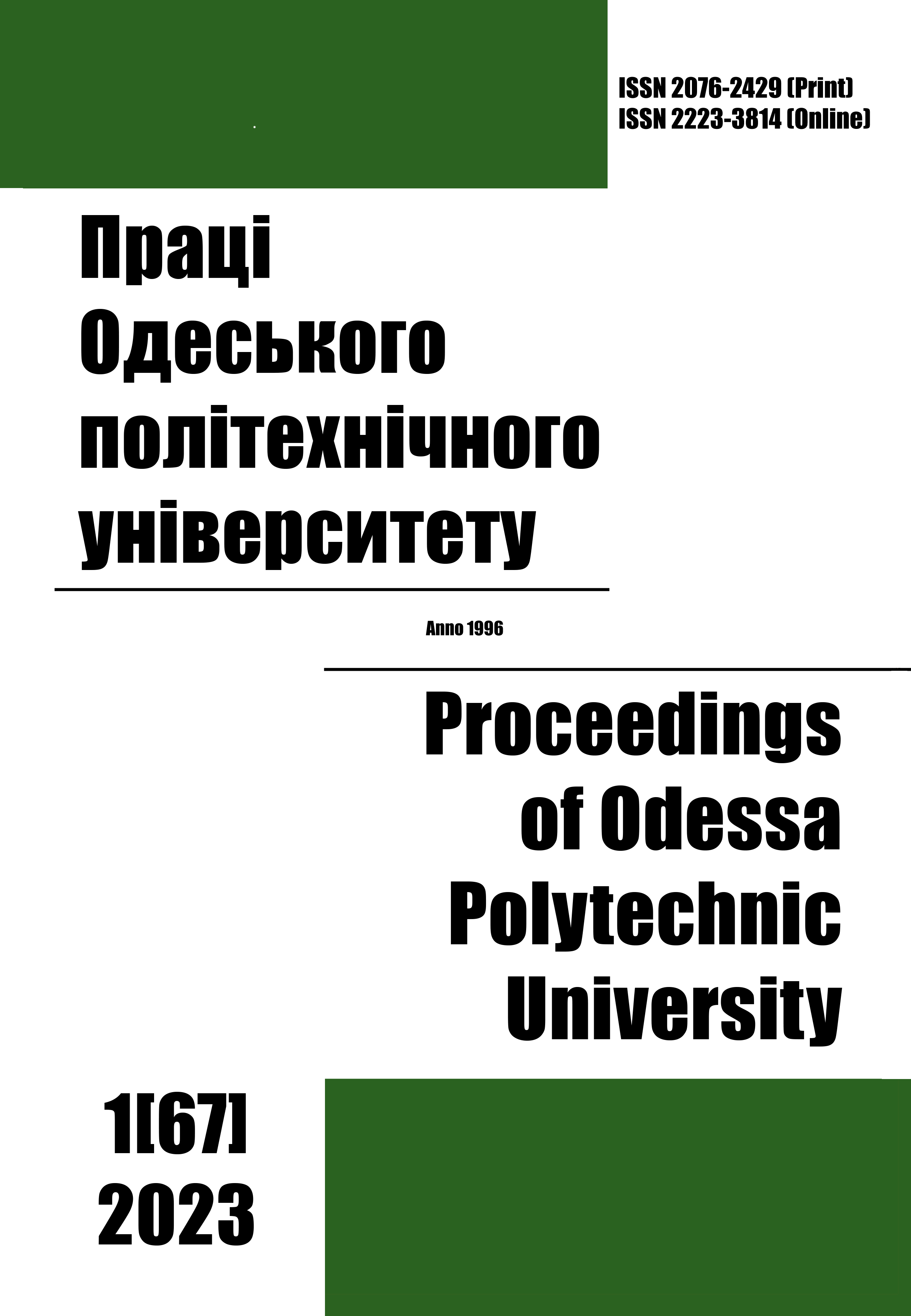Evaluation of the effectiveness of an unloading orthosis of the knee joint based on indirect indicators and surface electromyography data
DOI:
https://doi.org/10.15276/opu.1.67.2023.14Keywords:
knee brace, peripheral muscle fatigue, surface electromyography, linear regression, performance evaluationAbstract
One of the urgent tasks in the process of creating biomechanical devices, namely unloading orthoses, is to determine their effectiveness. The paper presents the results of a study of muscle fatigue of the hip synergists during isotonic contractions when performing squats both with and without the use of a knee joint unloading orthosis. In addition to determining indirect indicators that determine peripheral muscle fatigue, namely the number of squats performed and the speed of their implementation, another effective method for studying the progression of muscle fatigue, the method of surface electromyography, was used in the work. The data obtained in field experiments for both indirect indicators and surface electromyography recordings were processed by calculating the root mean square value, which made it possible to evaluate the effectiveness of the knee joint unloading orthosis using a regression statistical model. The coefficient of absolute slope of the linear regression, built on the basis of experimental data, was chosen as the criterion for evaluating the effectiveness. Surface electromyography data were recorded using the iiitech electromyographic reading module and processed using the Spike Recorder software package supplied with the module. Statistical processing of research results and calculations of linear regression coefficients were carried out using the MS Excel package. The analysis of the results obtained indicates the effectiveness of the use of the orthosis involved in the experiments, the use of which makes it possible to delay the decrease in the production strength of active muscle fibers and leads to a slower onset of peripheral muscle fatigue.
Downloads
References
Seguna C., Von Brockdorff A., Scerri J. and Scicluna K. Classification of Five Finger Movement, based on a Low-cost, Real-time EMG System. In Proceedings of the 13th International Joint Conference on Biomedical Engineering Systems and Technologies – BIODEVICES, 2020. pp. 149–159. DOI: 10.5220/0008978901490159.
EMG Signal Processing for the Study of Localized Muscle Fatigue – Pilot Study to Explore the Applicability of a Novel Method / Rodrigues Sandra, Faria Luís, MonteiroAntónio, Lima José, Barbosa Tiago, Duarte José. International Journal of Environmental Research and Public Health. 2022. 19. 13270. DOI: 10.3390/ijerph192013270.
Скиданов А.Г., Дуплий Д.Р., Колесниченко В.А., Радченко В.А. Спектральный анализ электромиограмм мышц спины при дегенеративных заболеваниях позвоночника (обзор литературы). Ортопедия, травматология и протезирование. 2015. № 1. С. 106–113. URL: http://nbuv.gov.ua/UJRN/OpTlP_2015_1_21.
De Luca CJ. Myoelectrical manifestations of localized muscular fatigue in humans. Crit Rev Biomed Eng. 1984. 11(4). 251–79. PMID: 6391814.
Changes in surface EMG parameters during static and dynamic fatiguing contractions / Masuda K, Masuda T, Sadoyama T, Inaki M, Katsuta S. J Electromyogr Kinesiol. 1999. 9(1). 39–46. DOI: 10.1016/s1050-6411(98)00021-2. PMID: 10022560.
Bhattachargee C.K., Sikder N., Hasan M.T., Nahid A.-A. Finger Movement Classification Based on Statistical and Frequency Features Extracted from Surface EMG Signals. 2019 International Conference on Computer, Communication, Chemical, Materials and Electronic Engineering (IC4ME2). 2019, pp. 1–4, DOI: 10.1109/IC4ME247184.2019.9036671.
Kim G., Ahad M. A., Ferdjallah M. and Harris G. F. Correlation of muscle fatigue indices between intramuscular and surface EMG signals. Proceedings 2007 IEEE SoutheastCon. 2007. pp. 378–382, DOI: 10.1109/SECON.2007.342928.
Maïsetti O., Guével A., Legros P., Hogrel J.-Y. Prediction of endurance capacity of quadriceps muscles in humans using surface electromyogram spectrum analysis during submaximal voluntary isometric contractions. European Journal of Applied Physiology. 2002. 87(6). 509–519. DOI: 10.1007/s00421-002-0645-x.
Katsis Christos, Ntouvas N., Bafas C., Fotiadis Dimitrios. Assessment of Muscle Fatigue During Driving Using Surface EMG. Biomedical Engineering. 2004. DOI: 10.2316/Journal.216.2004.2.417-112
Bala Smriti, Joshi, Deepak. An Attention-based Deep CNN-BiLSTM Model for Forecasting of Fatigue-induced Surface Electromyography Signals During Isotonic Contractions. TechRxiv. 2022. Preprint. DOI: 10.36227/techrxiv.21287487.v1.
Electromyographic fatigue thresholds of the superficial muscles of the quadriceps femoris / Housh T.J., deVries H.A., Johnson G.O., Housh D.J., Evans S.A., Stout J.R., Evetovich T.K., Bradway R.M. Eur J Appl Physiol Occup Physiol. 1995. 71(2-3). 131–6. DOI: 10.1007/BF00854969. PMID: 7588679.
Assessment of Muscles Fatigue during 400-Meters Running Strategies Based on the Surface EMG Signals / Yousif, H. A., Norasmadi, A. R., Bin Salleh, A. F., Ammar, Z., Alfarhan, K. A. Journal of Biomimetics, Biomaterials and Biomedical Engineering. 2019. 42. 1–13. DOI: 10.4028/www. scientific.net/jbbbe.42.1






